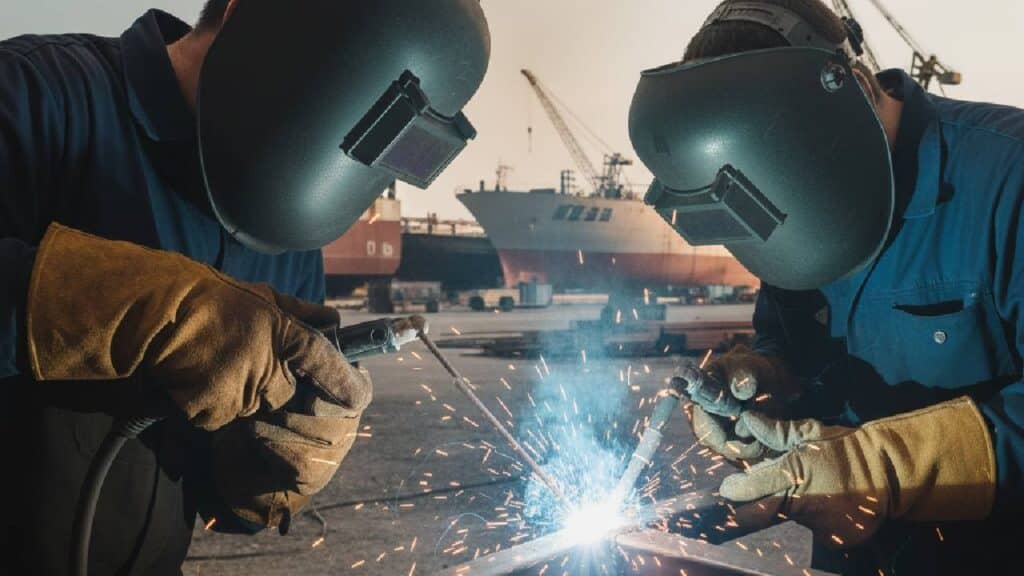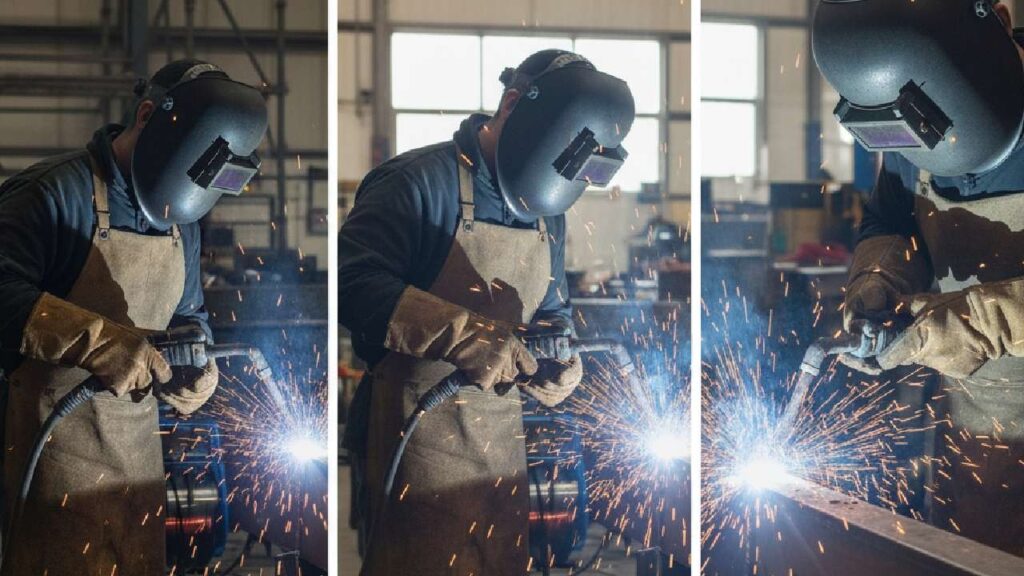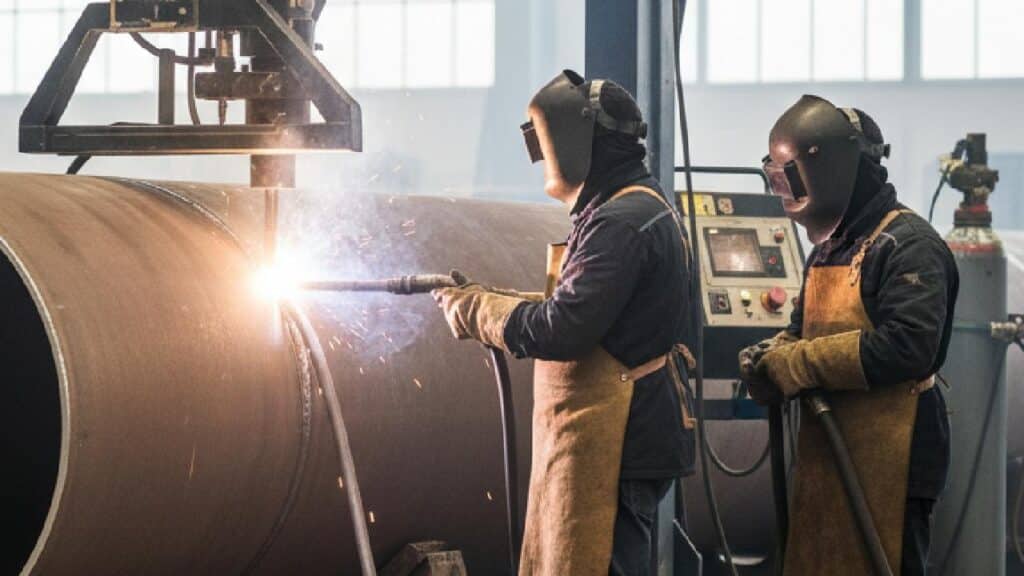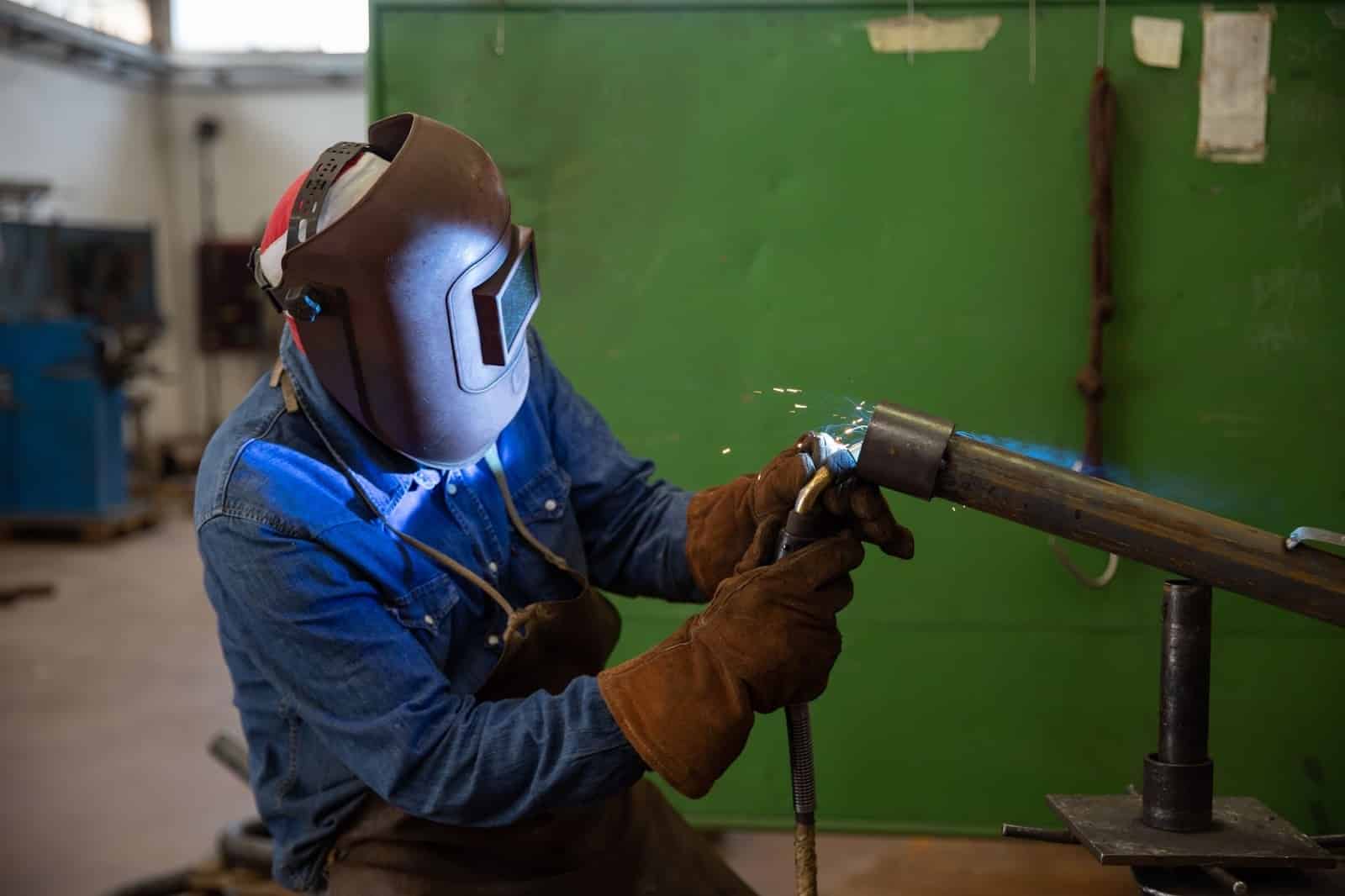Welding plays a critical role in metal fabrication and manufacturing.
There are multiple types, methods, and processes for welding different materials.
Wire welding is among the most reliable, versatile, and efficient methods of welding.
This guide breaks down the main wire welding processes and how they work.

What is Wire Welding?
Wire Welding, in simple terms, is a welding method that uses a continuous wire electrode, or welding wire, to join materials. Other than that, the wire also serves as a filler material, ultimately providing a source of joining.
Similarly, in practice, wire welding is considered a reliable, efficient method that produces durable, uninterrupted welds. It’s widely used in automotive, construction, and manufacturing.
How Wire Welding Works?
- Wire Feeding: It involves continuous feeding of wire through a motorized wire feeder.
- Arc Creation: When the welding gun’s button is pressed, an electric arc (3,300 Degrees Celsius) forms between the wire and the workpiece.
- Metal Fusion: Right after the arc is created, the wire and base material melt, and the molten wire acts as a filler to create the joint between the materials.
- Shielding Gas: To protect the material from atmospheric contaminants, a shielding gas combination is used. It includes specific ratios of Argon and CO2.
Core Components
- Power: DC or AC
- Wire Feeder: Feeds wire at a tuned ratio.
- Welding Gun: Handles wire, shielding gas, and arc in the welding area.
- Ground Clamp: Ensures an electrical circuit between the power source and the workpiece.
- Shielding Gas: Protects the weld from atmospheric damage.
- Control Panel: Controls the adjustment or tuning of parameters.
Types of Wire Welding
1: Gas Metal Arc Welding (GMAW) or MIG Welding

MIG Welding or Gas Metal Arc Welding (GMAW) is one of the most common methods of wire welding. It is used to weld materials with a low to moderate level of thickness.
MIG welding uses a solid wire fed continuously through the welding gun.
Moreover, the recommended ratio of Argon + CO2 as shielding gas is used to ensure protection against contamination.
Advantages
- Clean Welds
- Less Spattering
- High Welding Speed
- Best for Beginners
Disadvantages
- Indoor Use
- Not for Welding Thick Material
Applications
- Automotive, Manufacturing, and Construction Industry
- Stainless Steel Fabrication and General Work
2: Flux-Cored Arc Welding (FCAW)

In terms of operational mechanism, the FCAW is almost similar to MIG welding, but instead of using solid wire, it uses flux-cored wire.
FCAW can be further subdivided into two types:
- FCAW-S, which features a self-shielding system to protect against contamination.
- FCAW-G, which uses both the shielding gas and flux for protection.
Advantages
- Best for Outdoor Use
- High Deposition Rate
- Deep Penetration
- Excellent Structural Welding
Disadvantages
- Spattering
- Produces Slag
- Produces Smoke and Fumes
Applications
- Pipeline Welding, Shipbuilding, Construction, and Heavy Manufacturing.
- Outdoor Repairing or Welding
3: Metal-Cored Arc Welding (MCAW)
MCAW is a well-known wire welding process that uses a metal-cored tubular wire along with metallic powder and deoxidizers.
It is based on a combination of both MIG and FCAW, which does not use any flux to protect against contamination.
The MCAW method offers a high deposition rate, a high-quality weld, and reduced spatter.
Advantages
- Metal Powder Core
- High Deposition
- Stable Arc
- Minimal Spattering
Disadvantages
- Not Suitable for Outdoor Use
- High Cost
- Limited Wire Availability
Applications
- Automotive Industry
- Heavy Fabrication
- Robotic Welding System
- High-Speed Production Environment
4: Submerged Arc Welding (SAW)

Submerged Arc Welding is a wire welding process used for high-end projects over high-end materials.
This wire-welding process is an automatic or semi-automatic method using continuous solid or tubular wire and a granular flux to protect against contamination.
SAW is the only choice for thicker materials that require deep penetration.
Advantages
- Less Fume and Spattering
- Strong and Reliable Weld
- High Deposition
- Deep Penetration
Disadvantages
- Big and Costly Setup
- Not for Thin Materials
- Supports only Flat and Horizontal Position
Applications
- Heavy Structural Fabrication
- Steel Plate and Bridge Welding
- Pressure Vessel Manufacturing
- Boiler Manufacturing.
How to Choose the Right Wire Welding?
- Material Type: MIG for steel, stainless steel, and aluminum (mild), FCAW for thicker welds, MCAW for high-speed applications, and SAW for heavy structural welding.
- Work Environment: MIG is best suited for indoor use, while FCAW is suitable for outdoor use.
- Thickness of Material: MIG is considered best for thin to medium-thick material, while FCAW and SAW deal well with thick material.
- Welding Position: FCAW supports all positions accordingly, while MIG performs well in flat and horizontal positions.
- Appearance: MIG welding produces visually appealing welds, while FCAW produces stronger welds, which require cleaning.
- Budget: MIG setup is a budget-friendly option, while the SAW is more expensive.
What are Safety Precautions?
- Wear a welding helmet, safety glasses, a compatible uniform, fire-resistant gloves, and safety shoes.
- Work areas must be adequately ventilated to mitigate the effects of hazardous gases.
- Electrical connections, cables, connectors, and clamps must be in good condition.
- Work in a neat, clean, stable, and dry area to avoid any misap.
- Check and handle the gas cylinder carefully for any leaks or misalignment.
Final Remarks
Wire welding offers capabilities across low- to high-end welding projects, ensuring reliability, durability, speed, and efficiency. One needs to understand its types in detail to choose the best welding method for the required material.
MIG is famous for lighter tasks, FCAW for outdoor welds, MCAW for reliable and automated controls, while SAW is for heavy tasks, fulfilling the requirements of welding in automotive, construction, manufacturing, and fabrication industries. Choose wisely and enjoy welding projects as a learner, a DIYer, and a professional.
For welders searching for dependable entry-level and mid-range options, choosing a trusted welding equipment supplier is essential.
YesWelder provides a range of MIG, TIG, and Stick machines that offer practical performance for both shop work and field jobs, making it a reliable starting point for most users.
FAQs about Wire Welding
Beginners or Newbies should opt for the MIG welding method because of its simple controls and clean welds.
Generally, the Submerged Arc Welding (SAW) is considered a good method for strong, durable, and reliable welds.
Carbon steel, stainless steel, aluminum, and other alloys are perfectly compatible with the wire welding method.
Yes, it can be.
With the right settings and gas, wire welding can match the strength of stick welding.
But stick welding still performs better on dirty, rusty, or thick steel.
Most wire welding uses argon-CO₂ mixes.
A common choice is 75/25 (C25) for steel.
Flux-core wire does not need gas.



